Phase 1: Invasive species and trees
Structural tree surveys and works
Essential Tree work is a crucial part of transforming the Hiltingbury Lakes site into a safer and more attractive environment for the local community. Surveys of trees are carried out by specialist arboriculturalists. The surveys identify which trees which need to be substantially reduced or removed on safety grounds and trees which need to be pruned or subject to further survey. Recommendations for pruning are in line with sound arboricultural management, including removing dead wood over foothpaths.
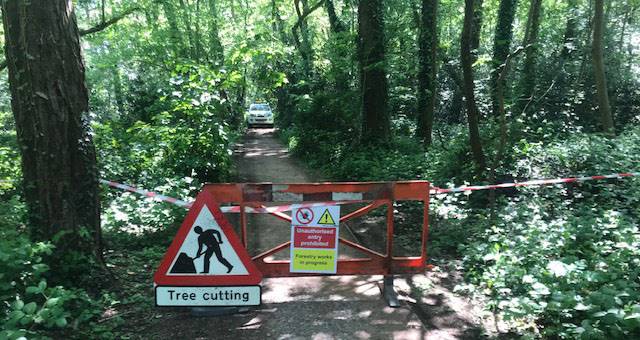
In 2020 tree surgeons carried out a large programme of works across the site between May and October.
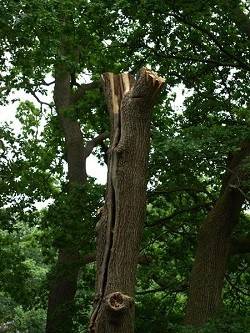
An ecologist worked alongside the tree climbers to check holes and crevices for nesting birds and bats prior to works taking place.
A family of squirrels was discovered in a split tree, and we were able to leave the nest site intact with the tree surgeons making a ‘coronet’ cut at the top of the monolith.
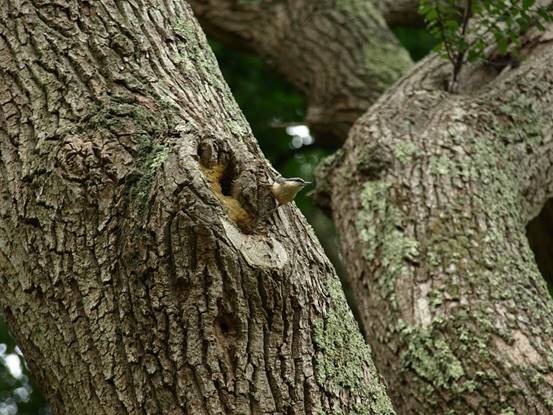
We found nuthatches feeding young in a tree due to have works, so we waited for them to fledge in peace before removing a nearby dead branch which was hanging over a footpath.
A tree survey was carried out in January 2021 and a small programme of safety works has been identified. These works have been carried out by tree surgeons.
Removal of Rhododendron, Laurel and self-set trees
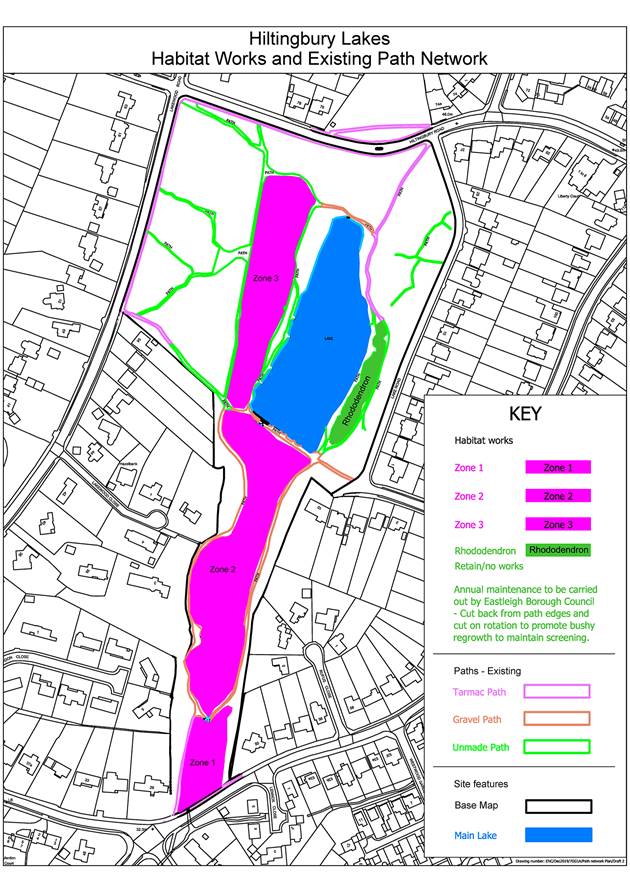
A large part of the restoration project is to restore ancient semi-natural woodland and wetland habitats on site.
To the left is a thumbnail image of the plan which shows the zones for where this work will take place.
To see a full sized image click here.
The plan shows the large bank of rhododendron which will be retained on the eastern side of the lake. Annual maintenance of this area of rhododendron will be carried out including cutting it back from path edges and promoting regrowth to maintain screening between housing and the lake.
Within Zones 1 and 2 on the plan the following works have been completed:
- All laurel, rhododendron, willow and alder trees and saplings have been felled.
- Mature alder trees with trunks over 250mm in diameter have been retained.
- All cut stumps have been treated with pesticide at recommended dosage.
- Fallen deadwood has been removed from within watercourses, however we are aware that more deadwood has been moved into the stream and our forthcoming site management plan will include measures to manage this.
Within Zones 1, 2 and 3 on the plan:
- All stumps cut by volunteers have been treated with pesticide at recommended dosage.
- All logs and brash cut by contractors have been removed from site.
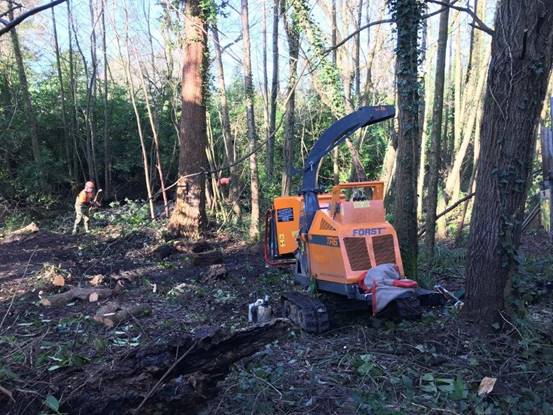
In February 2020 contractors used chainsaws and chippers to remove laurel and rhododendron bushes from within the southern pond system. This work paused at the beginning of March to allow birds to nest throughout spring and summer, and the exceptionally wet ground conditions to dry up.
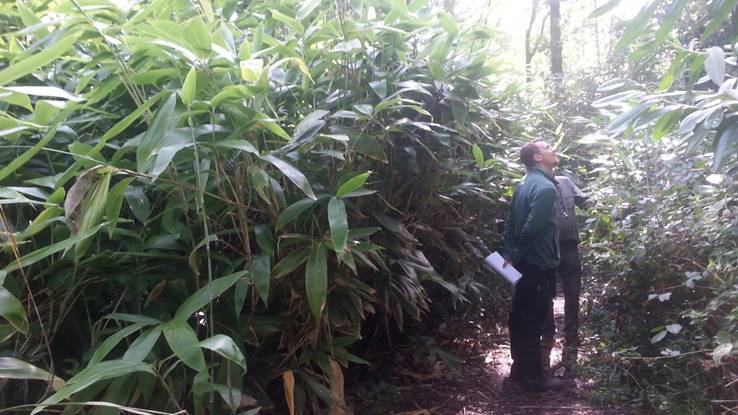
Bamboo is a real problem because it grows out of control and blocks paths.
This photo was taken in 2019 by the southern pond.
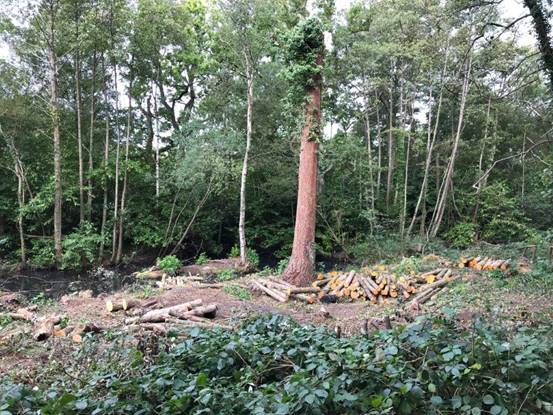
In September 2020 contractors resumed work to remove these invasive shrubs and self-set trees. The works were completed by the end of February 2021.
Regular volunteer tasks will control regrowth in the long term.
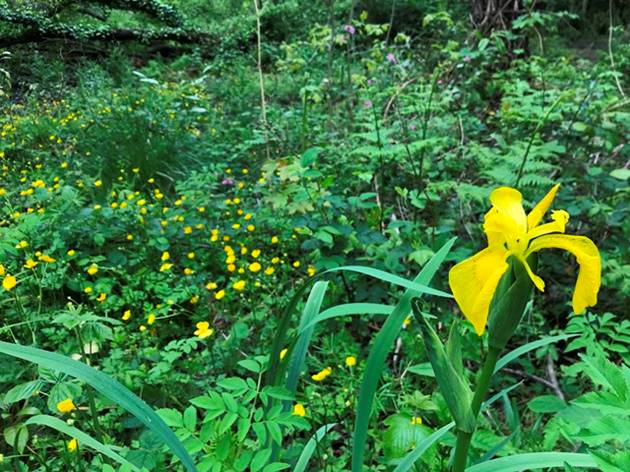
The wetland has been monitored to see which plants thrive in the lighter conditions.
These beautiful yellow flag iris and buttercups have flourished in the wetland.
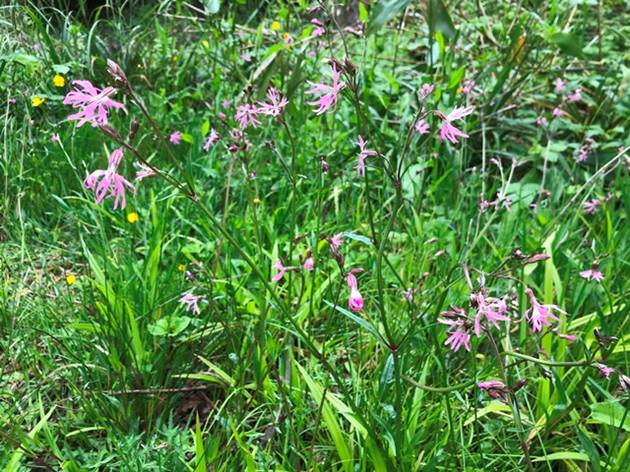
This ragged robin is a wet grassland specialist.
Volunteers have provided excellent support for this work between November 2019 and March 2020. They used bow saws and loppers to cut back paths and remove small rhododendron and laurel bushes. Brash was chipped and removed following the task days by Council staff. Volunteer tasks have been suspended during the COVID-19 emergency. We will advertise and resume tasks once it is safe to do so.
Removal of Bamboo
- Bamboo removal will be carried out by volunteers once volunteer tasks re-start when it is safe to do so.
- Clearance of laurel and rhododendron by contractors is being carried out first to expose the extent of the bamboo stands and create open working areas for our volunteers to work in.
- However, bamboo has been cut back by Countryside staff where it has been encroaching on paths, and recently around the lowest pond and small pedestrian bridge at the south of the site to enable watercourse engineering repairs to be designed.
- It is anticipated that bamboo will initially be cut down, followed by successive years of control (cutting and digging out roots) to keep the spread on bamboo under control.
